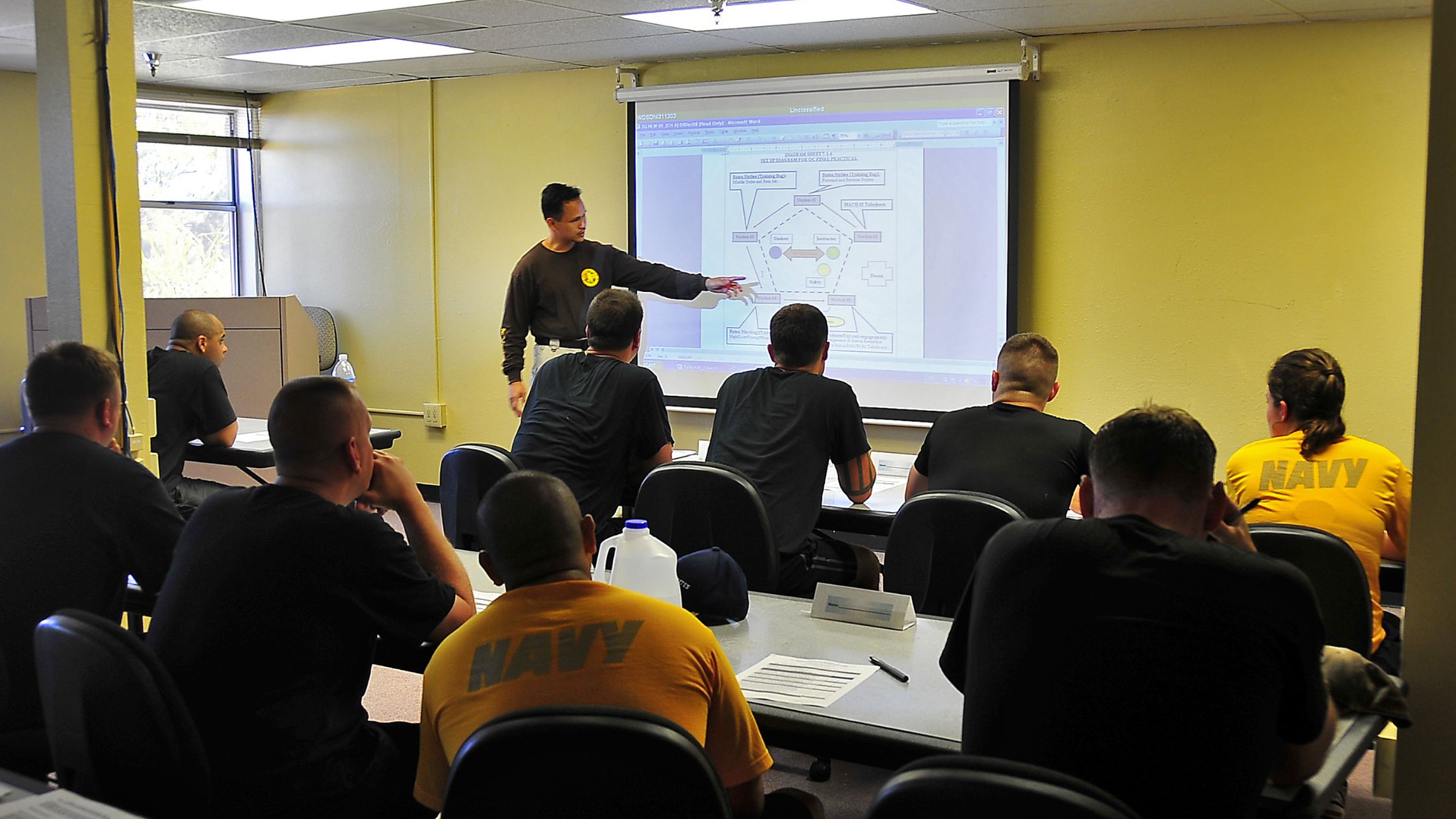How Often Should Officers Update Their Law Enforcement Training Courses?

In today’s fast-changing world, public safety demands more than basic policing knowledge. Officers must stay current with the latest skills, laws, and technologies. Law enforcement training courses are not a one-time requirement they need regular updating. This article from Blue Force Learning explores how often officers should refresh their training to stay sharp, safe, and effective on the job.
Why Ongoing Law Enforcement Training Is Important
Law enforcement training courses provide officers with essential knowledge about procedures, legal updates, safety tactics, and community relations. But laws change, new threats emerge, and best practices evolve. Continuous training helps officers respond better to real-world challenges.
- Improves decision-making during emergencies
- Reduces the risk of harm to officers and civilians
- Ensures compliance with current laws and standards
- Boosts confidence and job performance
- Builds stronger community trust
How Training Standards Are Set
In many regions, law enforcement training standards are established by state or federal agencies. These standards include both initial academy training and continuing education.
Common Regulatory Bodies
- POST (Peace Officer Standards and Training)
- State commissions on law enforcement
- Department of Justice (DOJ) guidelines
- Local or municipal police boards
Each agency may have its own rules for required hours, frequency, and approved course providers like Blue Force Learning.
How Often Is Training Legally Required?
The frequency of law enforcement training courses can vary depending on location, agency policy, and officer role. However, most agencies require ongoing training at least once a year.
Annual or Biennial Training
- Firearms requalification: Annually or semi-annually
- Legal updates and use-of-force policies: Annually
- Ethics and anti-bias training: Every 1–2 years
- CPR/First Aid: Every 2–3 years
Some departments mandate 40–60 hours of continuing education every two years.
High-Risk Areas That Need Frequent Training
Certain areas of law enforcement require more regular updates due to the risks involved or changes in public expectations.
Use-of-Force and De-escalation
Use-of-force is one of the most closely watched areas in modern policing. Officers should update this training at least once a year to keep up with policy changes and new techniques.
Crisis Intervention
Mental health crises require specialized responses. Officers should refresh this training every year to remain effective and avoid unnecessary conflict.
Active Shooter and Emergency Response
Officers need annual refreshers on emergency protocols and coordination with other agencies.
Role-Based Training Frequency
Training needs may vary based on an officer’s duties and rank.
Patrol Officers
They are usually required to complete the most frequent and wide-ranging training due to daily community interaction.
Detectives
May need periodic updates on interviewing techniques, forensic tools, and evidence handling laws.
Supervisors and Command Staff
They benefit from leadership courses and legal compliance training every 1–2 years.
Technology and Equipment Training
New tools and systems are constantly introduced in law enforcement. Officers need to stay informed on how to operate them properly.
Examples of Tech Training Needs
- Body-worn cameras
- Drones and surveillance systems
- License plate recognition tools
- Evidence tracking software
Training on these technologies should be refreshed whenever new models or systems are introduced.
How Online Training Makes Updates Easier
Blue Force Learning and similar platforms offer law enforcement training courses online, allowing officers to learn at their own pace. This flexibility makes it easier to stay compliant without interfering with duty schedules.
Benefits of Online Law Enforcement Training Courses
- Accessible from anywhere
- Cost-effective for agencies
- Easier to schedule around shifts
- Scalable for departments of all sizes
Online platforms also allow for automatic tracking of course completion and certifications.
The Role of Evaluations and Certifications
Training isn’t just about attending a course. it must be evaluated. Officers typically take quizzes or hands-on assessments to demonstrate they understand the material.
Why Evaluation Matters
- Identifies knowledge gaps
- Helps tailor future training needs
- Verifies legal and policy compliance
- Adds accountability to the process
Certificates often expire, which is another reason regular updates are necessary.
Emerging Topics That Require Regular Attention
As society and technology change, new topics become important in law enforcement.
Cybersecurity Awareness
Police departments increasingly rely on digital systems. Cybersecurity training should be updated yearly to address new threats.
Human Trafficking Recognition
This issue is gaining attention, and officers should refresh their understanding every 1–2 years.
Cultural Competency and Diversity
Training in cultural awareness and bias prevention should be ongoing, typically updated each year or every two years.
Agency-Wide Training Schedules
Departments should plan out training for the entire year to ensure consistency.
Example of a Yearly Training Schedule
- Q1: Legal updates, bias training
- Q2: Firearms requalification, use-of-force training
- Q3: Mental health and crisis response
- Q4: Cybersecurity and technology updates
This approach avoids last-minute scheduling and ensures all officers stay current.
How Blue Force Learning Supports Ongoing Training
Blue Force Learning offers a wide range of law enforcement training courses designed for continuous skill development. The platform is built to serve both individuals and entire departments.
Services Offered
- Custom training programs
- Certification tracking and reminders
- State-approved course materials
- Online and in-person hybrid options
This helps agencies stay compliant and saves time with automated reporting.
Why Skipping Updates Can Be Risky
Failure to update training can result in real-world consequences for officers and their departments.
Potential Risks
- Lawsuits for improper conduct
- Officer injuries due to outdated techniques
- Loss of public trust
- Disqualification of evidence in court
- Failure to meet POST or state standards
Regular training is a form of protection—for the officer, the department, and the public.
How Officers Can Stay Proactive About Training
Even if an agency doesn’t schedule frequent training, officers should take initiative to seek updates.
Tips for Staying Up to Date
- Sign up for email alerts from trusted platforms like Blue Force Learning
- Bookmark important legal websites
- Join professional law enforcement associations
- Attend webinars and workshops
Being proactive helps officers stay ahead of the curve and enhance their careers.
Comparing In-House vs. External Training Options
Departments may choose between in-house trainers or outside providers. Both have pros and cons.
In-House Training
- Cost-effective for large departments
- Easier to align with agency policies
- May lack fresh perspectives or updated content
External Providers
- Offer the latest courses and research
- Broader range of course topics
- May come at a higher cost
A blended approach is often best, using both internal and external resources.
Tracking and Reporting Training Progress
To ensure officers stay compliant, agencies should use training management systems.
Features of Effective Training Systems
- Dashboard views of completed courses
- Reminders for upcoming renewals
- Printable certificates
- Compliance reports for audits
Blue Force Learning includes many of these features to make tracking simple.
Final Thoughts
Law enforcement is a field where learning never stops. Officers must update their law enforcement training courses regularly to stay skilled, compliant, and prepared. Whether it’s annual firearms requalification or quarterly legal updates, the right training can make all the difference. With trusted partners like Blue Force Learning, departments and officers can confidently stay on track with modern, flexible, and effective training solutions.
Here, you can find more articles.




